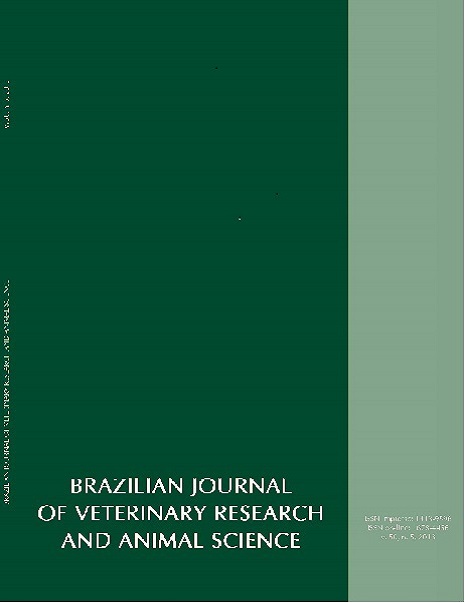Occurrence of Chlamydophila felis in a cattery in Osasco city, São Paulo state
DOI:
https://doi.org/10.11606/issn.2318-3659.v50i5p379-383Keywords:
Chlamydophila felis, Gatil, Infecção de Trato Respiratório Superior (ITRS)Abstract
Chlamydophila felis is associated with upper respiratory tract infections. In the present study, 31 cats from a noncommercial shelter located in Osasco, SP, Brazil, were examined. The cats presented with clinical manifestations, which were classified from grade 1 to 4, with 4 indicating severe manifestations. In total, 16.13% of the cats presented with grade 1 severity of clinical manifestations, 25.81% presented with grade 2, 38.71% presented with grade 3, and 19.35% presented with grade 4. PCR was used to detect C. felis in samples taken from the oral mucosa and ocular conjunctiva of both eyes using sterile, dry cotton swabs. Overall, 58% of the samples were positive for C. felis. Of these animals, none showed clinical manifestations that were classified as grade 1, whereas 5.56% of cats were classified as grade 2, 61.11% were classified as grade 3, and 33.33% were classified as grade 4. The median clinical manifestation intensity score for the first group was 3 and ranged from 2 to 4. In the second group not positive for C. felis, 38.45% of the animals (5/13) presented with manifestations classified as grade 1, 53.85% (7/13) were classified as grade 2, 7.69% (1/13) were classified as grade 3, and no animals were classified as grade 4. The median clinical manifestation intensity score for the second group was 2 and ranged from 1 to 3. In this study, there was a high occurrence of C. felis in animals with clinical manifestations.Downloads
Download data is not yet available.
Downloads
Published
2013-10-29
Issue
Section
ARTICLES
License
The journal content is authorized under the Creative Commons BY-NC-SA license (summary of the license: https://
How to Cite
1.
Gonsales FF, Brandão PE, Melville PA, Hora AS da, Zuniga E, Saidenberg A, et al. Occurrence of Chlamydophila felis in a cattery in Osasco city, São Paulo state. Braz. J. Vet. Res. Anim. Sci. [Internet]. 2013 Oct. 29 [cited 2024 May 8];50(5):379-83. Available from: https://www.revistas.usp.br/bjvras/article/view/79937





